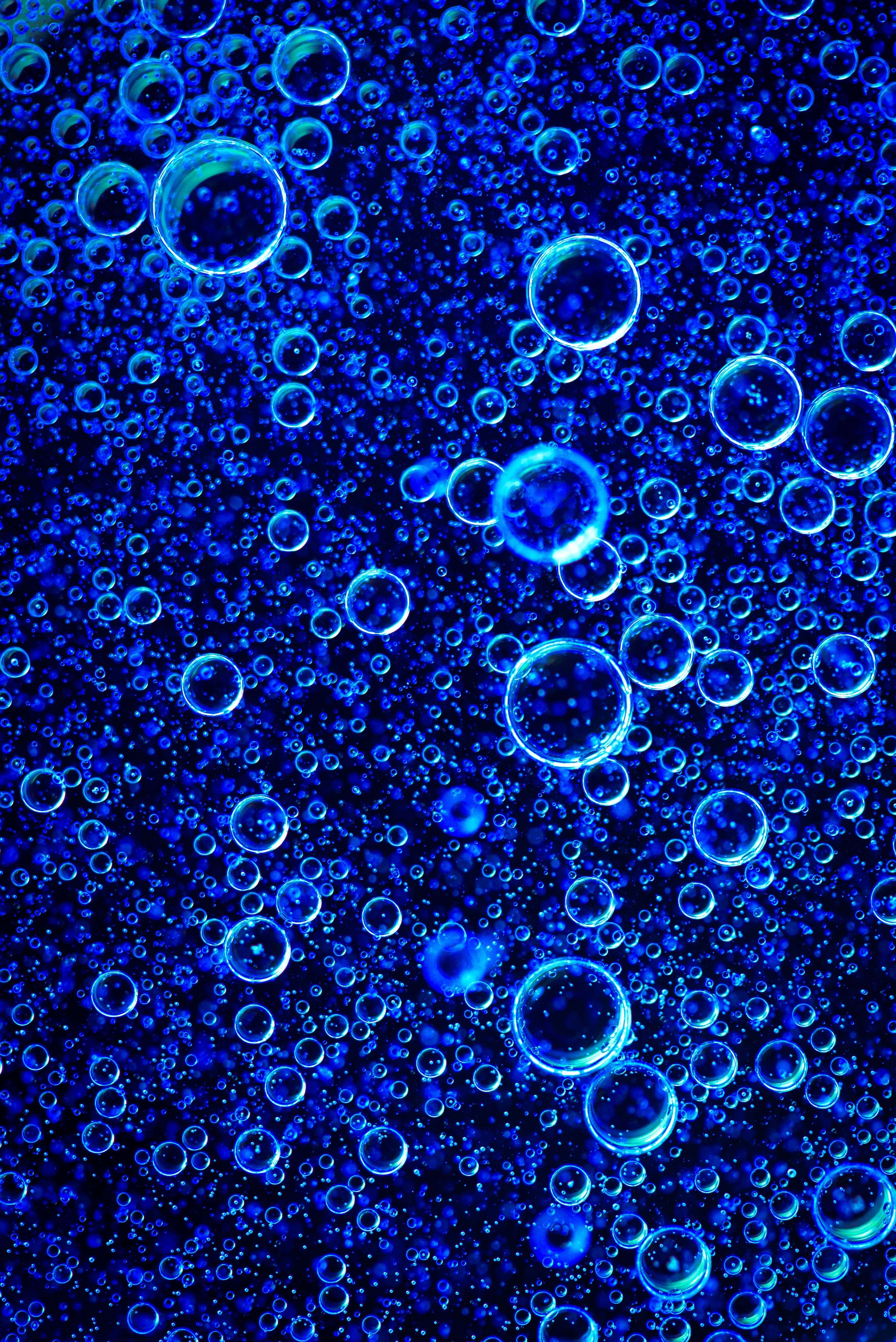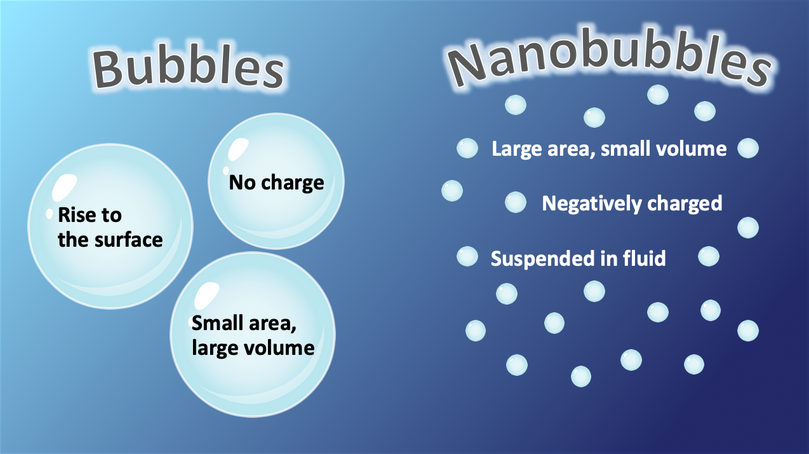Tiny bubbles, big impact: Are nanobubbles the future of liquid-gas engineering?

Summary
As scientists and engineers tackle bigger problems, sometimes the best solutions are very small. Nanobubbles, tiny gas spheres of 200 nm or less, have exciting potential in a range of applications spanning from wastewater treatment to medicine.

What are nanobubbles?
Nanobubbles are just like regular bubbles, spheres of gas suspended in a liquid. The difference is that nanobubbles are much smaller. So small, in fact, that they are about 10,000 times smaller than a grain of sand. The size and structure of nanobubbles give them unique properties that are useful in a wide range of applications (1). For example, the high surface area to volume ratio of small spheres means that nanobubbles are strongly reactive for their size. Additionally, nanobubbles have a neutral buoyancy, which means they can stay suspended in water. Imagine a soda that never loses its fizz. In wastewater treatment, nanobubbles have the potential to reduce the use of harmful chemicals by making reactions more efficient and removing water impurities through negative surface charges and oxidative processes (1).
How are nanobubbles made?
Nanobubbles can be generated in liquids through a couple of different processes. Cavitation creates nanobubbles when the pressure of a solution is reduced below a critical value. There are four types of cavitation, initiated by system geometry, ultrasound, high-intensity light, and laser pulses, respectively (2). Hydrodynamically generated nanobubbles are formed by releasing highly compressed gas into the liquid through special nano-sized nozzles or by using high-frequency vibrations to break gas into smaller and smaller bubbles (2).
Most commonly, nanobubbles consist of ambient air in water. However, one of the advantages of nanobubble technology is that the procedure is highly variable for different applications. New research using nanobubbles as a targeted drug delivery system fills the bubbles with even smaller drug-containing sacs called liposomes (3). The nanobubbles protect healthy tissues from being exposed to harsh chemotherapy drugs, allowing precise delivery to an intended target in the body. The range of applications for nanobubble technology has already made a big impact on the capabilities of liquid-gas engineering, and this is just the beginning!
References
- What are Nanobubbles? Moleaer: Advancing nanobubble technology. Retrieved from https://www.moleaer.com/nanobubbles
- Meegoda, JN, Hewage, SA, Batagoda, JH. Stability of Nanobubbles. Environ. Eng. Sci. 35:11 (2018). https://doi.org/10.1089/ees.2018.0203
- Batchelor, DVB, Abou-Saleh, RH, Coletta, PL, McLaughlan, JR, Peyman, SA, Evans, SD. Nested Nanobubbles for Ultrasound-Triggered Drug Release. ACS Appl. Mater. Interfaces 12:26 (2020) 29085-29093. https://doi.org/10.1021/acsami.0c07022
- Most Viewed Blog Articles (5)
- Company News (285)
- Emerging Technologies (64)
- Microbiology and Life Science News (93)
- Water and Fluid Separation News (97)
- Filtration Resources (93)
- Product News (19)


![Join Sterlitech at BIO 2024 [Booth #5558]: Exploring the Future of Biotechnology](https://www.sterlitech.com/media/blog/cache/300x200/magefan_blog/b4.jpeg)



